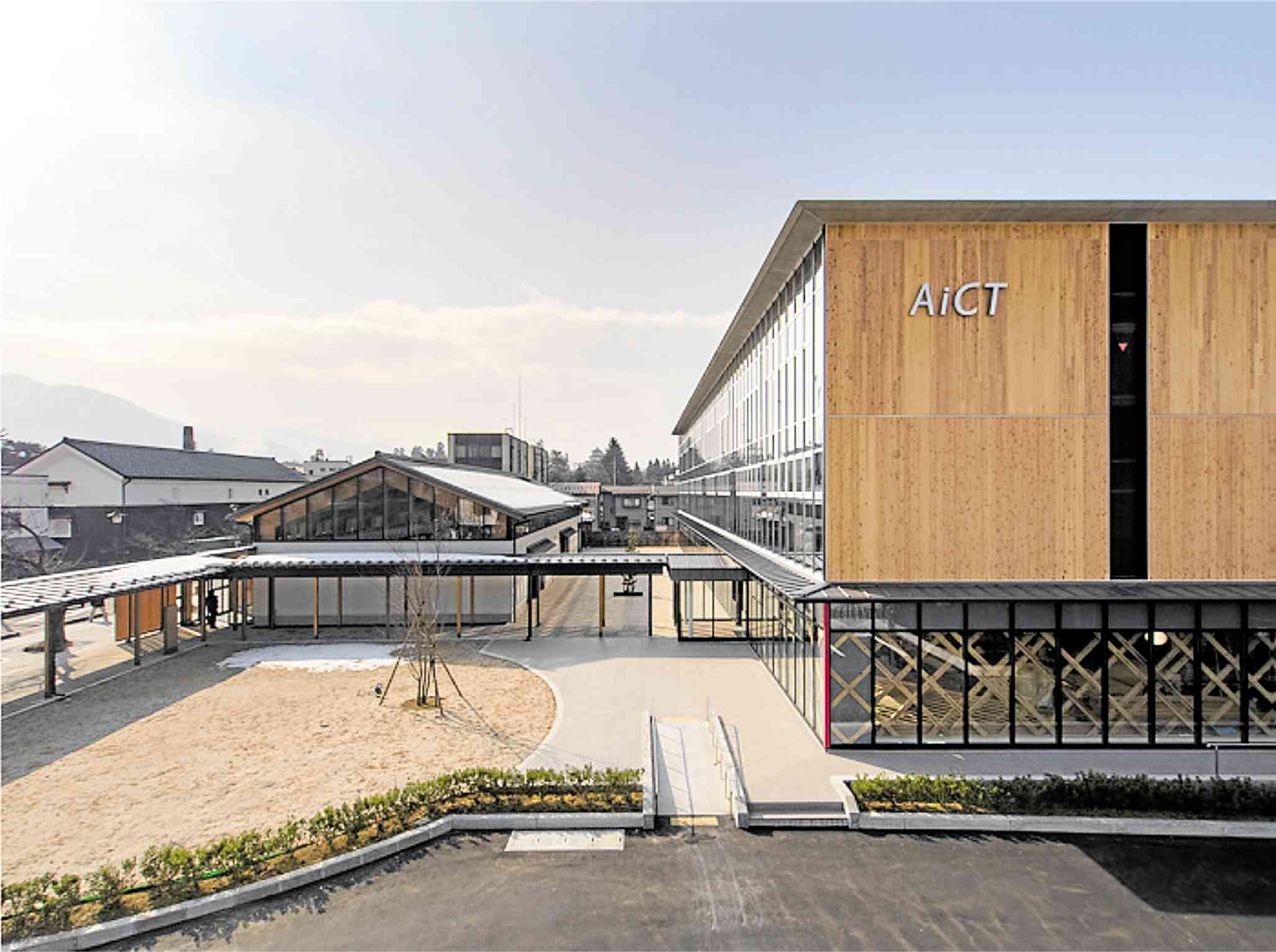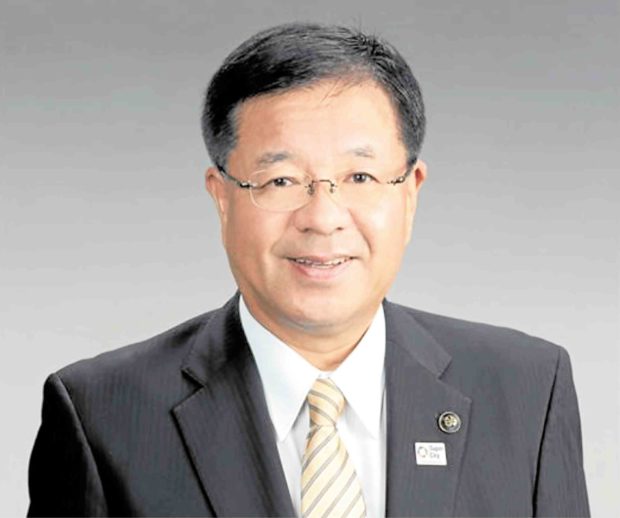Samurai City turns ‘smart’

INNOVATION HUB This city of 115,000 people opened the AiCT building in 2019 to attract tech-related firms and young people from big cities like Tokyo. —CONTRIBUTED PHOTOS
AIZUWAKAMATSU, Japan—Situated 300 kilometers north of Tokyo, this storied city is harnessing digital technologies like artificial intelligence (AI) and data analytics to overcome the challenges of a declining and aging population, and the stigma of the Fukushima nuclear disaster of 2011.
With 11 years of efforts to become a “smart city,” this remote city has emerged as a model of Fukushima’s recovery and revitalization.
Despite being 100 km away from the 20-km danger zone around the Fukushima Daiichi Nuclear Power Plant complex, the city’s Mayor Shohei Muroi says Aizuwakamatsu continues to suffer from the fallout of reputation damage.
For fear of radioactive contamination, more than 40 countries, including the Philippines, earlier banned the importation of agricultural products such as meat and seafood from Fukushima, and even from other prefectures.
The Philippines announced the lifting of its ban on Fukushima food imports in January 2020, almost nine years after the hydrogen explosion at the Daiichi nuclear power plant.

BOUNCE BACK Now hailed as an ideal smart city project, Aizuwakamatsu’s initiative started as a recovery strategy in the aftermath of the earthquake-tsunami-nuclear disaster of 2011.
Digitizing marketplace
Beyond agriculture, Aizuwakamatsu is famous for its samurai legacy, having been a stronghold of the losing side in the Japanese civil war of the 1860s. Its famous Tsuruga castle had been demolished when the defenders of the old feudal ways lost, but it was rebuilt a century later as Japan rose from the ashes of World War II.
In the aftermath of the 2011 nuclear disaster, City Hall partnered with the University of Aizu, which is known as a center of IT expertise, and technology consulting firm Accenture to pursue the smart city path as a disaster relief strategy.
This involved development of citizens skilled in science, technology, engineering and mathematics; encouraging an ecosystem for small businesses, both local and from outside Aizuwakamatsu; and using technology to improve city services related to education, health care, tourism and others.
This approach attracted the support of Tokyo-based global printing firm Toppan Inc., which diversified into agriculture and e-commerce. Toppan forayed into the Aizuwakamatsu scene with the mantra of local production for local consumption.
With demand for local agricultural produce devastated by the stigma of Daiichi, farmers in Aizuwakamatsu could not find buyers even if their crops were not affected.
With the help of seller-buyer matching platform called Jimonomikke!, which Toppan developed, food producers and buyers such as restaurants and hotels found a marketplace for products that could not make it through the regular wholesale system. These include vegetables that have blemishes or have irregular shapes or color. Through Jimonomikke!, buyers who don’t mind these imperfections are found.
The platform, which launched just last July, uses AI to manage seller-buyer matching, delivery routing, traceability of the crops, temperature controls, and payments and receipts.
Kenji Matsudo, manager of Toppan’s Smart City Design Center Aizu, says Jimonomikke! has reduced the burden of sales and ordering, improved the efficiency of product distribution, and improved office administration.
With this service, farming households have the opportunity to further bloom as enterprises. And because of the use of digital technology, farming has become attractive to younger people in this city where the average age of farmers is 66.
Toppan is just one of more than 40 ICT-related firms that are hosted at Aizuwakamatsu’s Smart City AiCT facility, a shared-office complex which opened in 2019 as a 50-50 partnership between City Hall and a consortium of more than 90 companies.
On Dec. 5, it hosted the fourth annual Asean (Association of Southeast Asian Nations) Smart Cities Network (ASCN) High Level Meeting, which gathered representatives from 26 Asean cities that are implementing smart city projects.

Shohei Muroi, Aizuwakamatsu mayor, says their smart city is designed to be a decentralized and mutual aid society focused on citizens
Sharing the playbook
In March 2022, Japan’s Ministry of Land, Infrastructure Transport and Tourism launched the Asean Smart City Planning Guidebook, developed in consultation with the ASCN and the Asean Secretariat.
In the Philippines, Manila, Cebu City and Davao City are pushing to complete initiatives to enable these centers of the Philippines’ three metropolitan areas to harness digital technologies and data to operate more efficiently and become more livable.
Among the three local governments, a common project is one that involves a citywide network of surveillance cameras intended to improve vehicular traffic management and response to accidents.
For this, Manila is upgrading its Command Center into a cloud-based system that is equipped with 28 display panels and more than 100 cameras that can do facial and license plate recognition.
Cebu is building its own Command Center, which is needed for a planned Automated Citywide Traffic Control System. Meanwhile, Davao is adding CCTV cameras and also developing an intelligent traffic control system.
In addition, Manila is working on integrating medical records, assistance and monitoring, and a patient management system that allows operating room supervision, medical student training and consultations, and joint operation with experts from abroad or other hospitals.
Manila is also developing mobile tutorial apps that allow students to review lessons online; and build internet-ready classrooms that are provided with PCs and tablets.
Meanwhile, Cebu and Davao are developing their respective Bus Rapid Transit projects.
Interior Secretary Benjamin Abalos, one of the speakers at the meeting, says the Philippine government envisions every city to be a smart city, one that uses the latest technology to improve operational efficiency, facilitate knowledge and information sharing, and provide better quality public services.
“As part of the national agenda, we are aggressively instituting reforms both at the national and local levels for sustainable development utilizing the growing trend of smart cities,” Abalos says.
He says the Department of Interior and Local Government assists cities and towns in the adoption of smart innovations and sustainable solutions to improve their regulatory services such as business and construction permits, as well as regulations and delivery of social services to their constituents.
“Local governments should continue to innovate and adopt smart technologies in increasing efficiency in their operation, systems and services to propel itself towards sustained local economic development,” Abalos adds.














